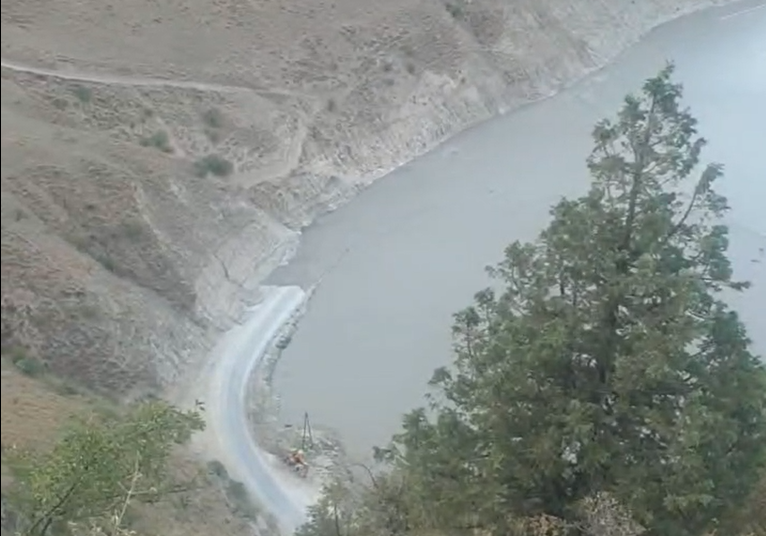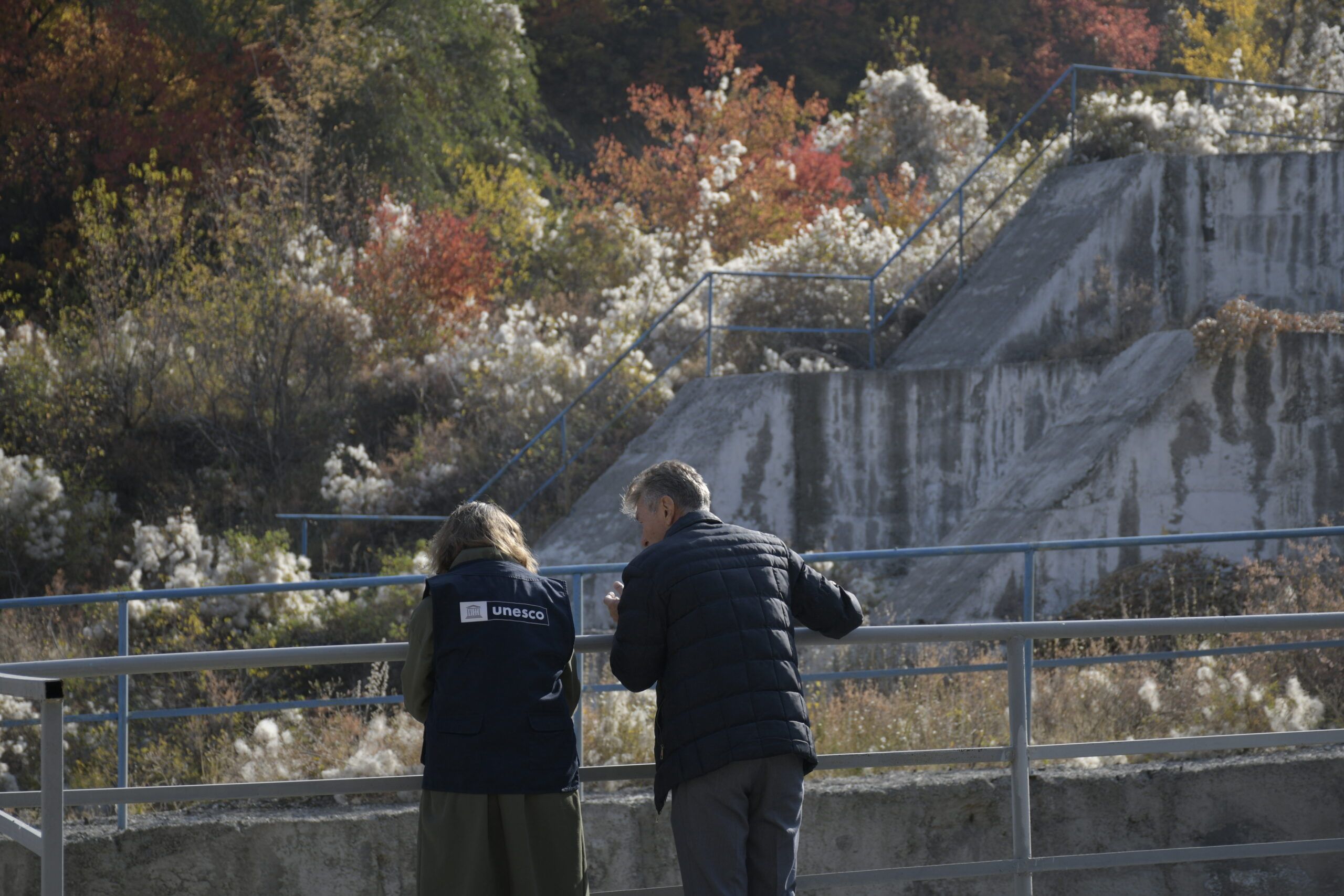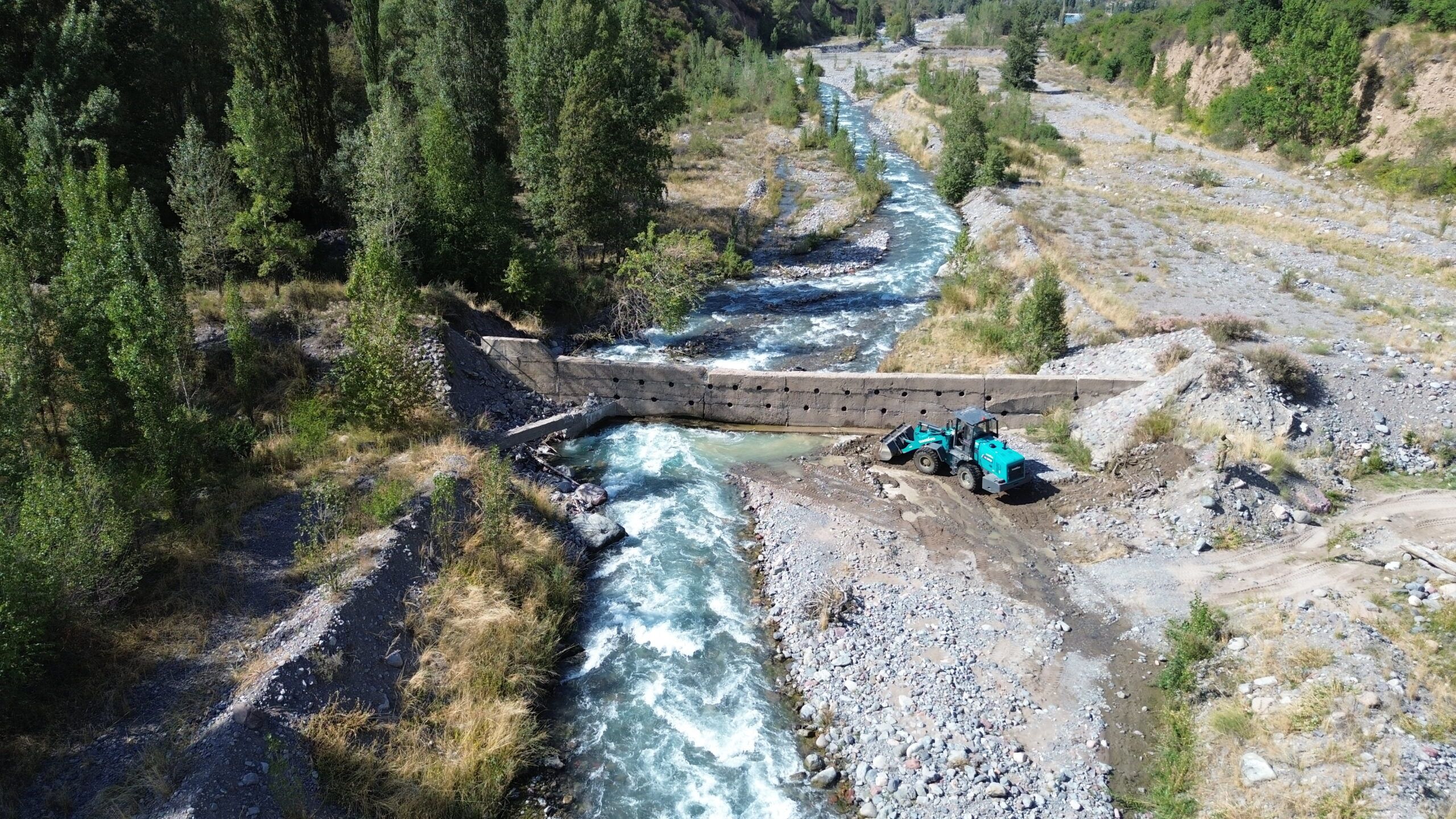Glacier Lake Outburst FloodsTajikistan13 August 2025
Series of Glacier Lake Outburst Floods in Lakhsh District: Another Call to Action

On the evening of 10 August 2025, a powerful mudflow descended in the Archakapa area of Lakhsh District, Tajikistan, originating from a glacier lake on the Said Nafisi Glacier (formerly Baralmos). The flow blocked the Surkhob River for more than two hours, washed away over 400 metres of road along the Vahdat–Rasht–Lakhsh–Saritash highway, and left behind piles of rocks, mud, and debris. The drainage was a normal process for this type of glacial lake, but was worsened by high temperatures and accelerated glacier melt. Fortunately, there were no casualties. However, this is far from an isolated incident.
Kamoliddini Nazirzoda, Deputy Head of the Glaciology Centre at the Agency of Hydrometeorology of Tajikistan, explained:
“The Said Nafisi Glacier has become extremely unstable in recent years: several lakes of varying sizes have formed on its surface, which regularly experience partial outbursts during the warm season. Over the past five years, similar events have occurred 23 times. This summer alone, three major events took place in this area – on 14 July, 22 July, and 10 August. Each outburst leads to mudflows, blockage of the Surkhob River, and damage to the Vahdat–Rasht–Lakhsh international highway near the border with the Kyrgyz Republic. Road repairs can only begin after 10–15 days, as the sediment becomes waterlogged and remains unstable.”
According to Dr Evan Miles, an expert from the University of Zurich, the flooded area of the road and scale of damage has increased over the past several years. Dr Miles noted that Said Nafisi is a surge-type (pulsating) glacier, and that the development of these lakes is an unfortunate normal part of the surge cycle. It is possible that the lakes become even larger until the next surge, as was the case in 1998. For now, the recurring floods isolate part of Tajikistan and their increasing severity makes road repairs progressively more difficult.
Lakhsh District is a pilot area in Tajikistan part of the GLOFCA project, implemented by UNESCO and funded by the Adaptation Fund. In the near future, an Early Warning System will be installed here and alternative transport routes strengthened so that, even if the main road is blocked, residents remain connected to the outside world and can evacuate in time.
GLOFCA works to ensure that mountain communities are aware of the danger in advance and have time to protect themselves.
Impacts of the recent (10 Aug 2025) outburst
Read more

GLOFCA installs risk information boards in Talgar and Esik, Kazakhstan

GLOFCA Project Completes Engineering Works in Talgar, Kazakhstan
